In the third and final part on the latest room fragrances by Carrière Frères, I would like to devote myself to the Museum Collection, which was created in collaboration with the National Museum of Natural History in Paris and now includes four scented candles. In French, the name of the institution is Muséum national d’histoire naturelle, which of course sounds much prettier than the English translation.
Founded in the 18th century, the National Museum of Natural History is an institution admired beyond the borders of France for its facilities and appreciated for its research work. Thus, in addition to the famous botanical garden Jardin des Plantes, the Natural History Museum in Paris alone also includes, among other things, a zoo, an anthropological-prehistorical and a geological-mineralogical mueum, as well as numerous other facilities spread throughout France.
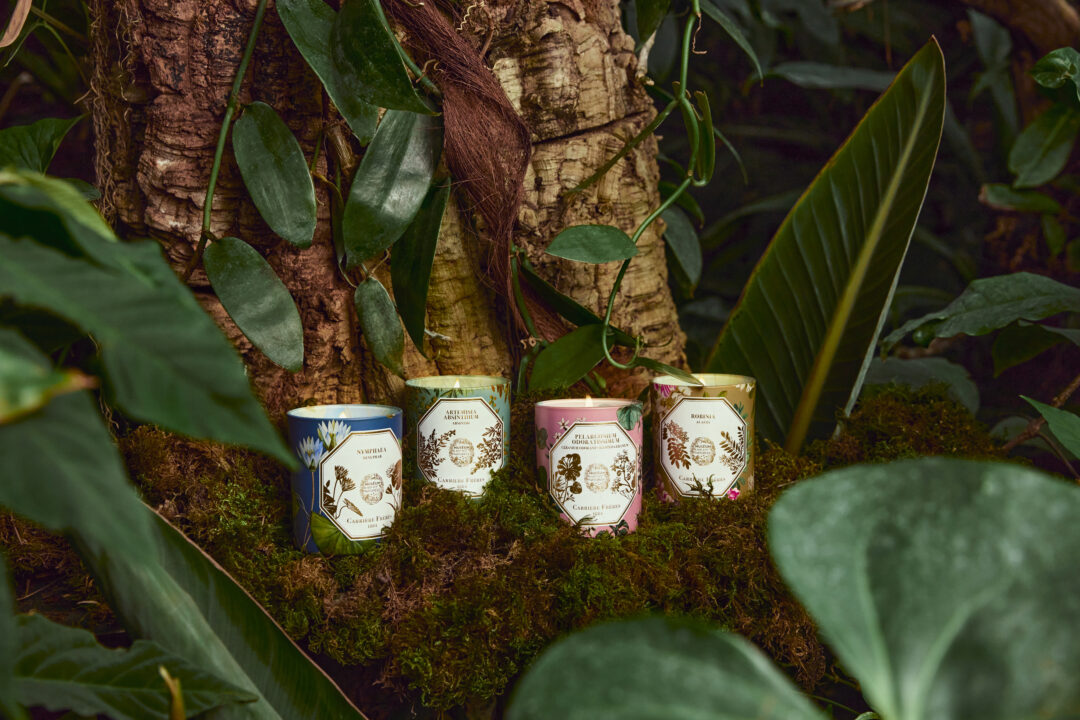
The collaboration enabled the Carrière Frères brand to access a collection of botanical drawings on parchment paper from the 17th to 19th centuries, stored in the archives of the National Museum of Natural History. These coloured drawings show extraordinary plants, which are particularly detailed and finely worked out. They can be found on the jars of the Museum Collection scented candles, which make this line already purely visually special.
Nymphea – Nenuphar
The scented candle Nymphea – Nenuphar is dedicated to the giant water lily (Victoria amazonica), which originally comes from the Amazon region and whose floating, plate-like leaves have a diameter of up to three metres. The flowers of the giant water lily can grow up to forty centimetres tall and turn from white to pink during their two-day blooming period.
Fortunately, the scent of the giant water lily is not realistically replicated by the Nymphea scented candle. This is because the flowers emit a strong odour of decay, which attracts pollinators typical of the species. Carrière Frères, on the other hand, probably relies on the scent of other water lilies for this candle, which seem to smell absolutely pleasant.
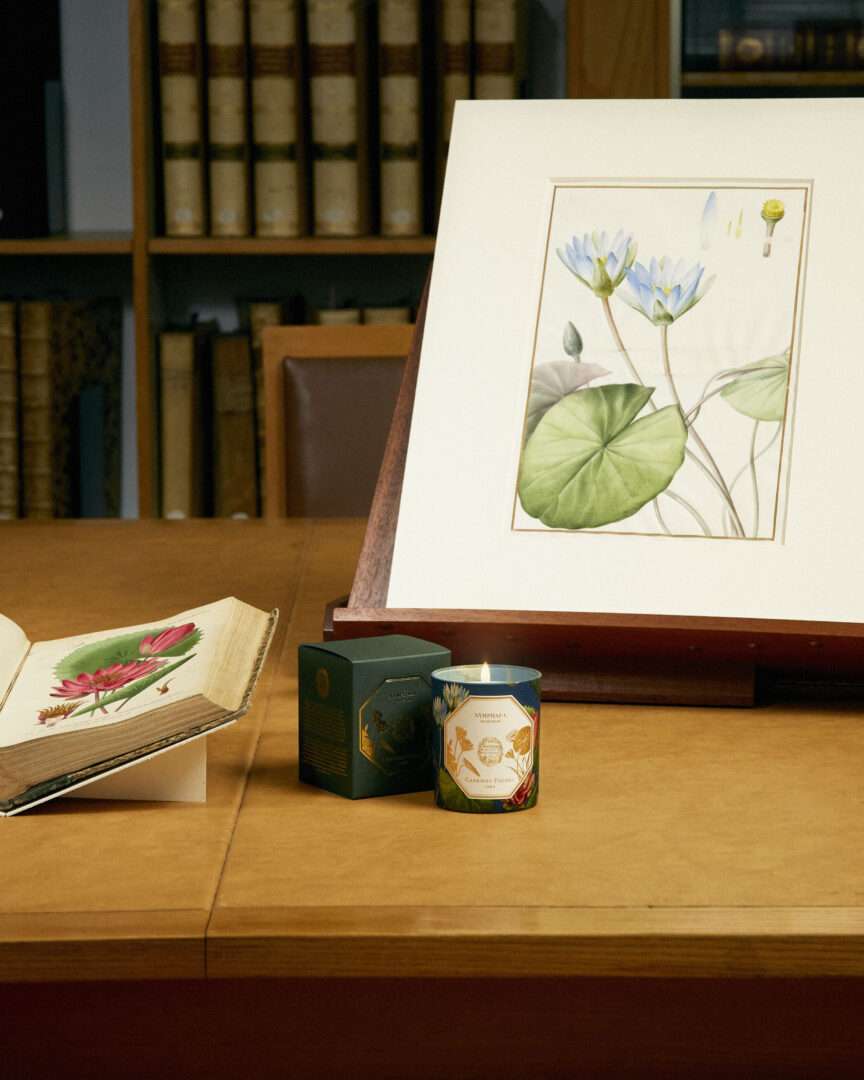
Nymphea exudes a honey-sweet and delicately floral fragrance when unlit, with an inherent melon-like fruitiness. I don’t detect watermelon in the candle, but rather honey or cantaloupe, whose soft and sweet watery nuances seem to me to go perfectly with a scented candle dedicated to a plant that grows in or on water. When ignited, these fruity-floral and sweet notes are more subtly perceptible and thus evoke an unobtrusive, spring-like-summery room scenting that I like extraordinarily well. 💙
Artemisia Absinthium – Absinthe
Even if the name of this scented candle might suggest it, with the liquor absinthe popular among the intellectuals and artists of the 19th century the scented candle Artemisia Absinthium – Absinthe has only remotely to do. The use of this room scent is therefore not only permitted from the age of 18, and you can also get through a room scented with this candle without any intoxication. 😉
However, the said liquor was certainly made from the common wormwood(Artemisia absinthium), a plant that has been revered since ancient times for its primarily gastrointestinal healing powers. “A plant with a stimulating effect and intense herbal aroma, with green, fragrant tones softened by a woody base note.”
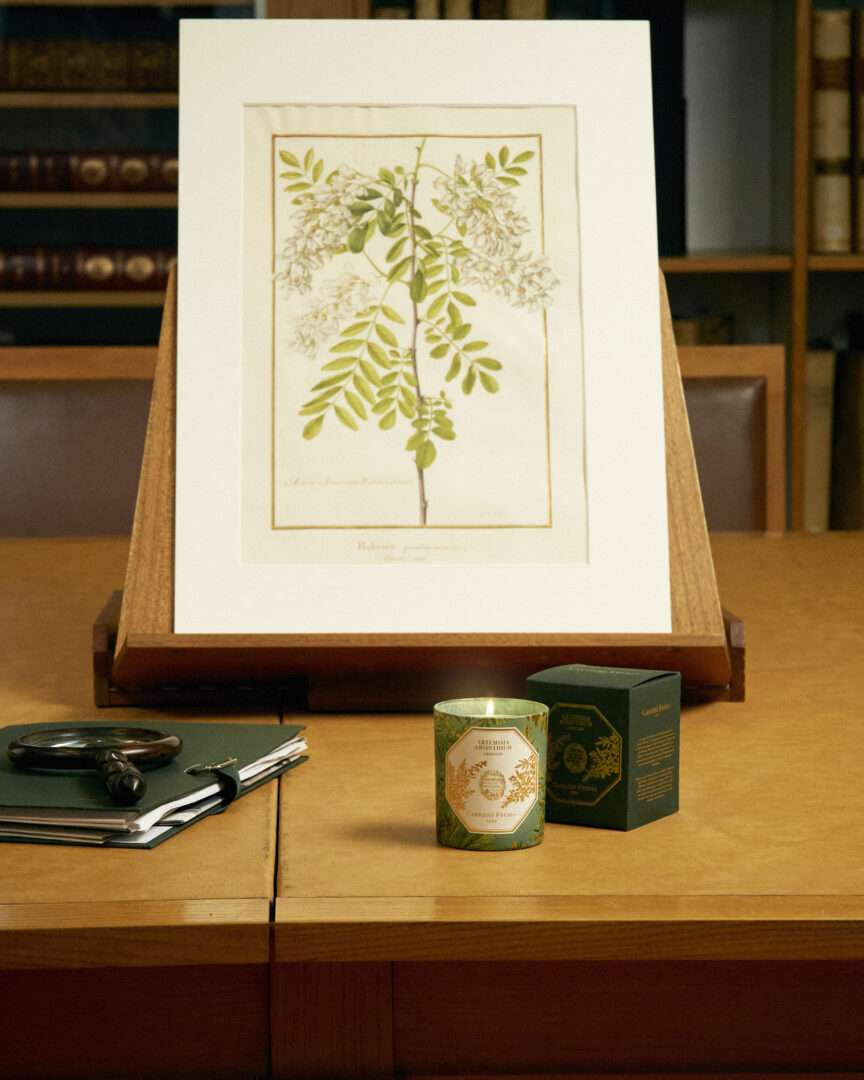
Greenish, reminiscent of herbs and with a citrusy freshness, this is how the scented candle by Carrière Frères presents itself before being lit. I perceive the scent as slightly minty and cool – my first thought is verbena – which makes the candle perfect for the warmer season. There is also a hint of sweetness, which is closely blended with the citrus nuances. When ignited, Artemisia Absinthium seems greener and more herbal to me. The citrus notes are less present, but the candle reveals gently woody and woody tendencies. Perfect for those who are looking for a scented candle without floral and sweet notes. 💚
Robinia – Acacia
The third scented candle Robinia – Acacia should be the one with the most flower power, I strongly suspect. This is because the nectar-rich flowers of the robinia, also known as the false acacia, emit an opulent and sweet fragrance from May to June that attracts numerous insects. Therefore, the black locust is also considered a honey plant.
Native to the eastern United States, the acacia or robinia (Robinia pseudoacacia) has lush, cool green foliage, flat pods that contain its seeds, and clusters of sweet, cream-colored flowers. It was named in honor by Swedish botanist Carl Linnaeus after Jean Robin (1550-1629), the botanist to French King Henry IV, who introduced the tree to France. This has been planted in Europe since the 17th century. The tree can live more than 300 years, and still today in Paris you can see two unique specimens of these trees planted by the king’s gardener: one in the Jardin des Plantes, planted in 1636, and another in the city center, in the Square René-Viviani, not far from the Notre-Dame de Paris Cathedral, which dates back to 1601 and is the oldest tree in Paris.
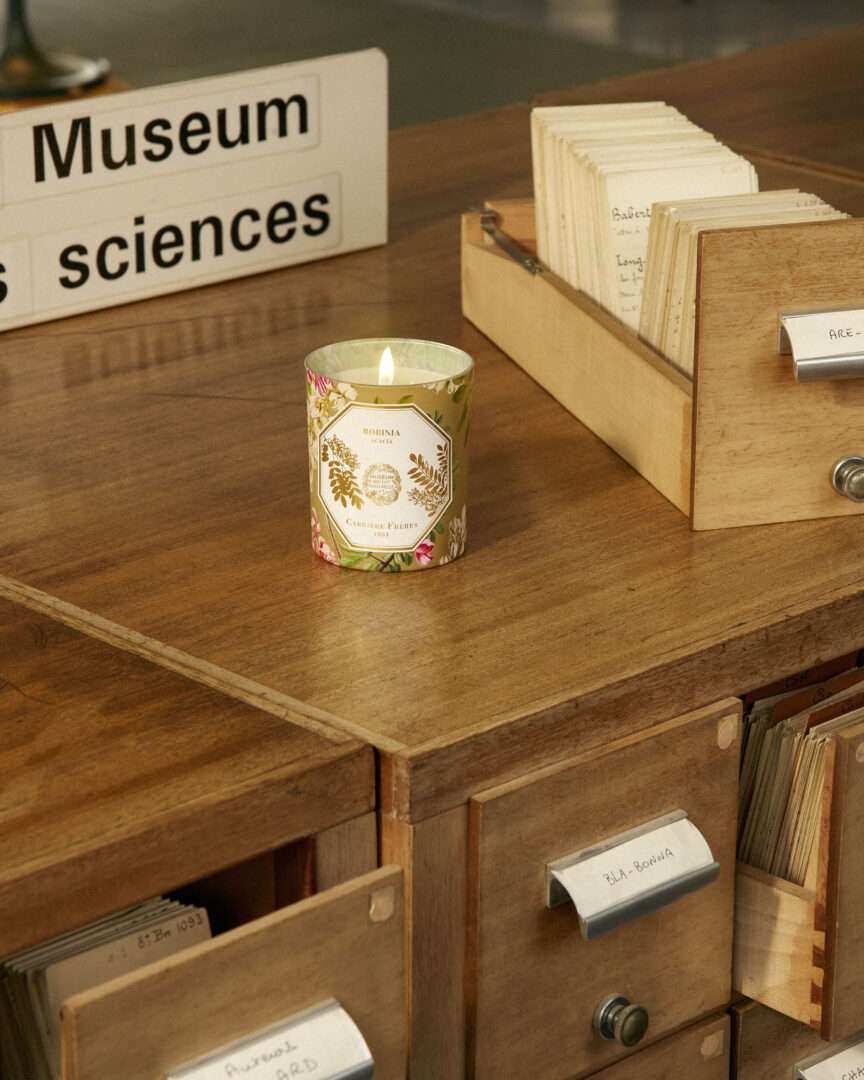
Very sweet, floral and reminiscent of mimosa, Robinia is the most intense and floral of the three candles already tested from the Museum Collection by Carrière Fréres. Sunny, summery and perfect for all friends of lovely floral scents and mimosas. When lit, the scented candle exudes soft powdery and honey-like nuances with greenish and fruity moments. A scented dream in sunny yellow. 💛
Pelargonium Odoratissimum – Geranium Odorant
The latest addition to the Museum Collection is Pelargonium Odoratissimum. The name is a bit bulky, but the plant is all the more pretty for it. The cultivated forms called geraniums – mainly in the colour-blocking pink and red varieties – that are found in some places in Germany in balcony boxes are distantly related to the scented geranium, of which there are numerous species. Perfumer Serge de Oliveira was responsible for the creation of this candle.
This fragrance joins the collection of perfumes developed in collaboration with the National Museum of Natural History in Paris: Pelargonium Odoratissimum, a variant of the fragrant geranium. This species expresses the passion of the museum’s scientists and botanists for the Versailles Chèvreloup Greenhouse: the 200-hectare park houses countless greenhouses where 137 varieties of pelargonium are cultivated – including 400 known and documented species.
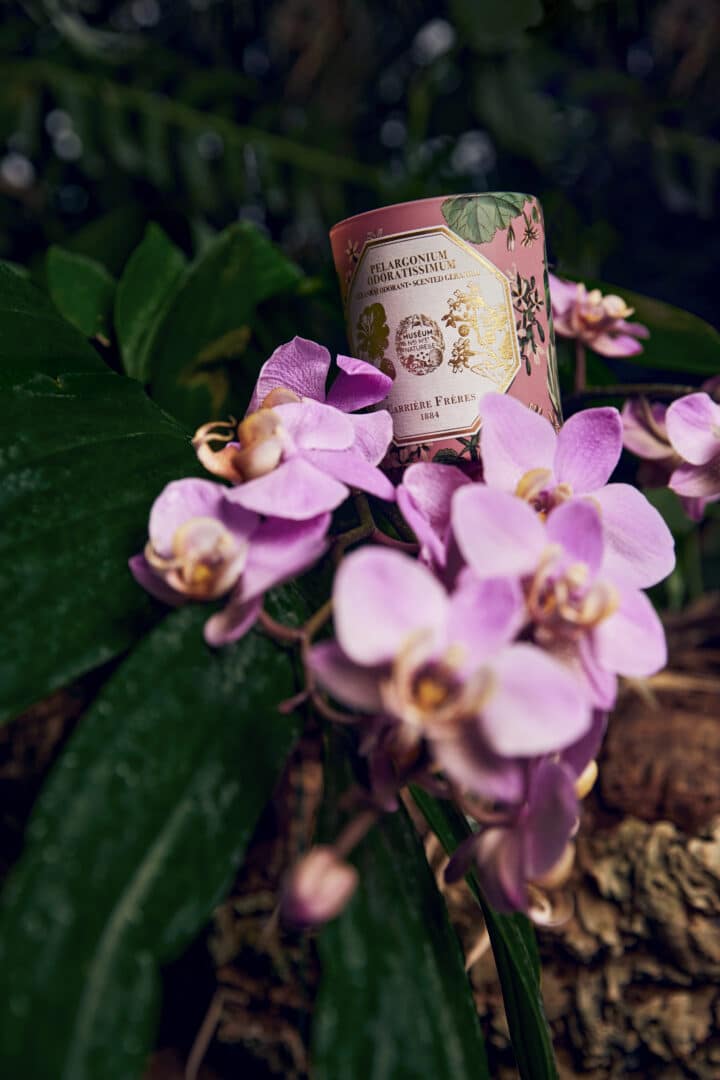
Pelargonium Odoratissimum smells citrusy, fruity and greenish when unlit. Delicately soapy accents I perceive beyond that. When lit, the scented candle reveals gentle, soft, almost powdery nuances that are greenish-herbal, floral and fruity. It is a tranquil fragrance, with inherent fresh and meditative moments, and for a floral fragrance, it comes with pleasingly little sweetness. 🙂 Perfect for those who prefer subtle and rather discreet room scenting with greenish floral notes.

Be First to Comment